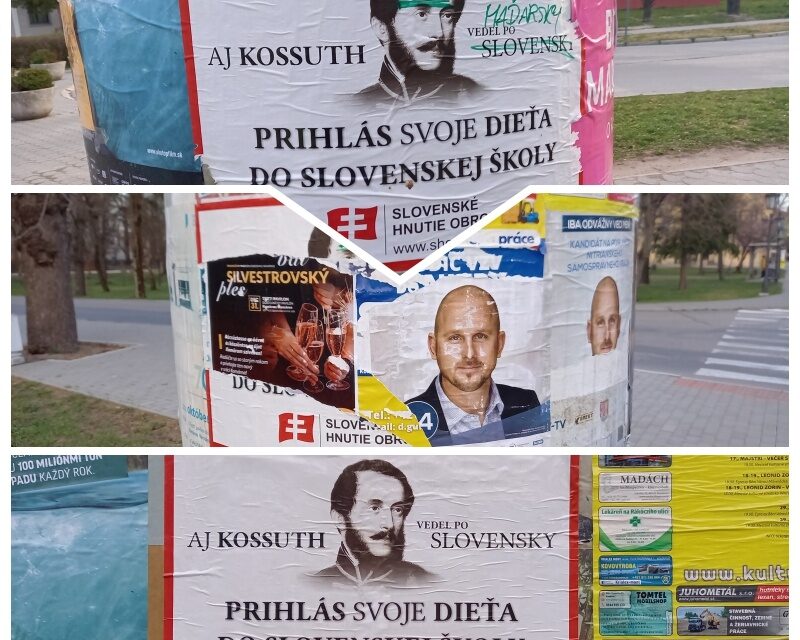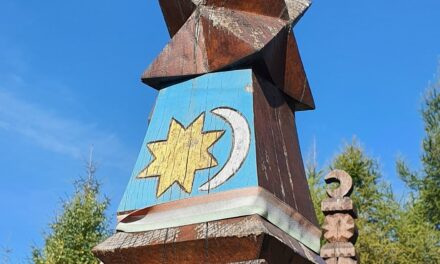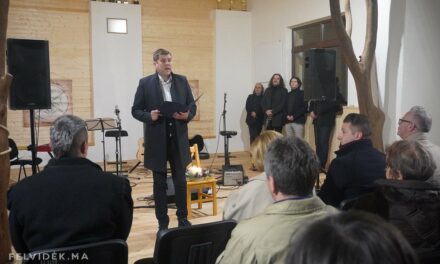In recent days, our editorial office has received several letters and inquiries from readers, the topic of which is that in Komárom, in several parts of the city, Slovak-language posters have been put up promoting Slovak-language schools with the face of Lajos Kossuth. The short message claims that Kossuth also knew Slovak - enroll your child in a Slovak school!
The posters are written by the Slovak Renewal Movement (Slovenské Hnutie Obrody - SHO), which describes itself as a civil association but also as a political movement. We addressed the movement with questions, we wanted to know why they thought that they wanted to make the Slovak school election more attractive with the person of Kossuth, for whom these messages are intended, and where and in what quantity these posters are distributed.
Since we did not receive a reply from them, we asked the historian and associate professor László Szarka to decipher the absurd message. We wanted to find out from him whether Lajos Kossuth could really speak Slovak, and what is the point of promoting Slovak schools in a Slovakian city still mostly inhabited by Hungarians, referring to the Hungarian statesman. With the historian, we also looked for the answer to what kind of assessment the person of Lajos Kossuth falls under in Slovak historiography.
According to László Szarka, it is "multiple bizarre" that Kossuth is referred to in the assimilation appeal.
"In addition, with the intention of deceiving the Hungarian parents in Komárom. Referring to the memory of Lajos Kossuth, who in 1848-1849 played the most important role in the creation of the modern Hungarian nation based on civil equality," he underlined. .The historian noted that in our shared history for centuries, thousands of noble and urban bourgeois families in Upper Hungary before 1918 spoke several languages, Hungarian, Slovak, Latin and German. Lajos Kossuth's father, László Kossuth, came from a Slovak-speaking noble community as a minor noble from Turóc county. However, after graduating from law school in Sárospatak, he earned his living as a manorial prosecutor of the Andrássy Counts in Zemplén County in Monok, Hungary, and then in Sátoraljaújhely.
He started a family in Sátoraljaújhely. He and his wife Carolina Weber raised their eight children in Hungarian. Thus, the reference to Lajos Kossuth in the Komárom poster certainly deliberately confuses the Slovak origin of Kossuth's father with Lajos Kossuth's unproven, assumed knowledge of the Slovak language. He does all this with the intention of deceiving the Hungarian parents of today in Komárom, he recorded.
László Szarka added that until 1849 Kossuth enthusiastically supported the use of Hungarian instead of Latin in secondary schools, and at the same time
"Hungarian should be taught carefully in every village school"."Thus, it is several times bizarre to refer to Kossuth in the Komárom poster's call for Slovak assimilation," he stated.
As you can see in our opening picture, SHO's posters were damaged, scrawled on and torn down in several places in Komárom.
Source, full article and image: Erika Szalai/Felvidék.ma












